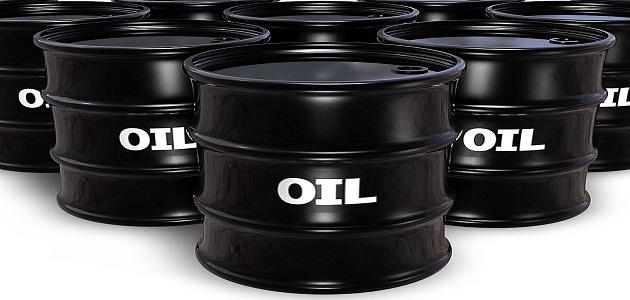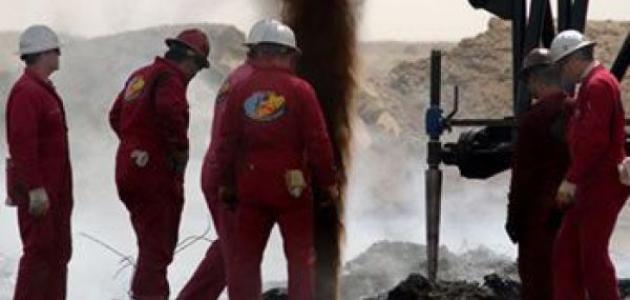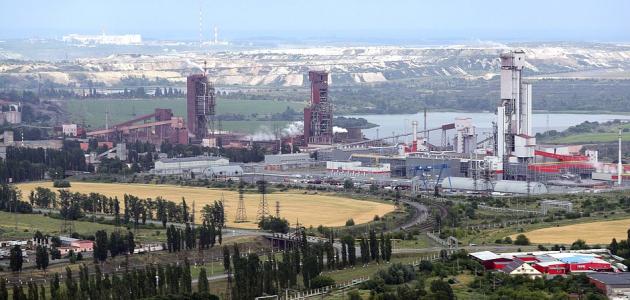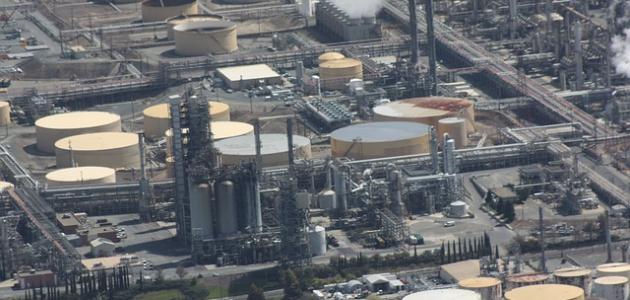petroleum
Petroleum, oil, or what is called as a literary term crude oil or black gold, is a liquid that is black or green in color, and is found in the upper layers of the earth's crust. It is extracted from it, and petroleum is considered the main source of primary energy on which man relies mainly, but the uses of petroleum have multiplied in man, so he uses it in the production of electric power, moving means of transportation, and when doing oil analysis, it produces a lot of chemical products, such as: pesticides, And fertilizers, nylon, fabrics, some plastic tools, leather, and medicines are also produced.
The United States of America is the largest consumer of oil in the world, with a consumption value of approximately 80 million barrels per day, and this percentage is a quarter of the global production of oil, and 4% of the world's population consumes approximately 25% of the world's oil.
source of petroleum
The origin of petroleum is due to the microorganisms that lived in the seas, as it is known that the globe was completely submerged in water, and various organisms lived in it, and when the water receded and land formed, these organisms remained stuck on the land and with time they were buried in the ground and decomposed by bacteria anaerobic, and a layer of organic materials mixed with mud was formed, and with the passage of time and the presence of pressure and heat, these organic materials turned into petroleum and the mud turned into sedimentary rocks, and there are some theories that explain the formation of petroleum and are summarized in three theories, which are the biological theory, the chemical theory, and the mineral theory:
Read also:How to refine oilPetroleum theories
Biological theory
This theory put forward that petroleum formed from the remains of living organisms that were in ancient times, especially marine organisms that were buried and mixed with sand and other sediments, and with time they turned into sedimentary rocks and were subjected to enormous pressure from heat and other factors, so sedimentary rocks were formed, which are rocks that carry organic remains in their folds. Which is characterized by its richness in carbon and hydrogen, which turns into hydrocarbon substances that make up petroleum and natural gas, and the most important thing is the activity of anaerobic bacteria that extracted oxygen, sulfur and nitrogen from the cells of living organisms; This theory is the most widely accepted among contemporary scholars for several reasons, namely:
- The oil fields that are discovered are often in sedimentary rocks or near beaches.
- The oils that are extracted from the ground contain organic compounds.
- The extracted petroleum is characterized by the characteristic of photosynthetic activity, and this property is unique to organic materials.
mineral theory
This theory says that petroleum is inorganic, that its origin is mineral, and it is formed as a result of water vapor that deposits of metal carbides in the ground are exposed to, as calcium carbide, when it interacts with water, forms unsaturated hydrocarbon, but carbide deposits are rare and were not present in huge and sufficient quantities to extract The huge quantities of oil that are still present in the ground.
Read also:The benefits of oil in our daily lifeChemical theory
This theory assumes that in ancient times hydrogen united with carbon to form hydrocarbons, and after that it spread into the ground and stored in it. This theory assumes that oil is present in all parts of the globe, and what contradicts that is that the Arabian Gulf region alone contains more than two-thirds of the global reserves. This was confirmed, and it is not plausible that living organisms are so numerous that they cover the area of the globe, and there are many scientists who believe this theory to the extent that excavations were carried out at depths of more than five thousand meters in Russia, Sweden and the United States in order to confirm their theory, but to no avail.
Methods of obtaining petroleum
Oil is obtained by digging wells, and the lengths of the wells vary according to the possibility of access to oil, and there are some wells from which oil comes out naturally, but these fields have now run out and reliance on drilling remains; Oil is extracted by pressure, and valves are placed at the head of the oil well connected to a network of pipelines for storage, and this method is called initial oil extraction, and there is a technique that helps increase the pressure of the reservoir that contains oil by injecting natural gas, air or carbon dioxide, There is another way to extract oil, which is by reducing the density of oil to increase production, and the other way is to heat the oil to make it easy to extract it by injecting water vapor into the reservoir.
Read also:Effects of falling oil pricesPetroleum history
The first oil well in history was drilled in the fourth century AD in China, where oil was burned to produce salt, and then bamboo was used as pipes connecting salt water sources in the tenth century, and in the eighth century AD, bitumen was used to pave roads in Baghdad, and the bitumen was It comes after oil filtration processes, and in the ninth century AD, oil production began in economic ways for the first time in Baku-Azerbaijan. The history of modern oil began with the discovery of the distillation process, which was in the year 1853, and the distillation of kerosene oil resulted at the hands of Igbasi Lucasviz, the Dutch scientist, and the first mine was established in Burbka in southern Poland, and the first distillation plant was built in Yulazowiez, and then oil discoveries followed, where in In 1859, oil was discovered by Edwin Drake, which resulted in the invention of internal combustion engines.
Despite the discovery of oil, coal was the most popular type of fuel in the year 1955 AD until the energy crisis occurred in the year 1973 AD. Although petroleum is a limited substance and can be exhausted, the uses of petroleum have increased and become 90% of the fuel for cars and electricity generation, and the importance of oil lies in the fact that it was a cause of the outbreak of World War II and the Iraq-Iran war, and oil is considered the most important commodity in the world in our current era. It is indispensable in the industry, as it is an essential material in the chemical industries. It is known that the largest oil reserves in the world are located in the Middle East, specifically in the Arab Gulf countries, where their reserves are estimated at 80%.
The future of petroleum
58 million barrels of oil per day is the volume of world consumption, as vehicles, transport and communications in the United States consume the largest proportion of the general amount of it, which amounts to 21% of the world’s oil, and industry, commerce and others consume about 30%, the global EWG issued statistics showing that Global oil production reached its highest levels during the years 2008/2011, and in the future it will decrease gradually, and the statistics say that the oil need in 2020 will reach 100 million barrels per day, while production will be only 60 million barrels per day, which will create a major crisis and the price of oil will rise to reach The Authority predicts that oil production will decrease to 44 million barrels per day and consumption will increase to 115 million barrels per day.









